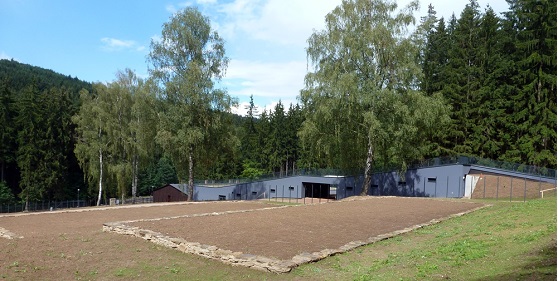
The conversion of the memorial in Hodonín near Kunštát to a Roma museum has begun
 |
Brno - The National Pedagogical Museum has begun the planned transfer of the memorial to the Romani Holocaust in Hodonín u Kunštátu to the Brno Museum of Romani Culture. The first step is the transfer of the site to the Office for the Representation of the State in Property Matters. On Monday, the National Pedagogical Museum signed a contract with the office, with the actual takeover taking place on December 11, announced today to ČTK Lucie Krausová from the National Pedagogical Museum.
The office will subsequently hand over the memorial to the Museum of Romani Culture, which will take care of it. Construction work at the site was completed last year, and this year experts have been preparing the exhibition. Adjustments have also continued, aimed at bringing the memorial closer to the appearance of the original camp from 1942 to 1943.
The future manager of the site will also receive from the National Pedagogical Museum printed materials with texts and graphic designs of the planned exhibition in all three buildings, including photographs. The memorial was originally supposed to be open to the public already this August. However, preparations were paused due to uncertainties about who should operate the exhibition and how it should look exactly.
The director of the Museum of Romani Culture, Jana Horváthová, welcomed the planned handover of the memorial to the management of the specialized Brno institution. "We have been trying for this for three years. We also appreciate that we have managed to negotiate some conditions to ensure it can be at a dignified level. We indeed have few positions and a large volume of work," Horváthová told ČTK in September. According to her, the museum will increase the number of positions by six due to the takeover of the memorial.
In the so-called Romani camp in Hodonín u Kunštátu, the protectorate authorities gathered Moravian Roma from August 1942 to September 1943 before transporting them to Auschwitz. The facility accommodated 1,396 children and adults, of whom 207 died there. Afterwards, it became a labor-educational camp, at the end of the war a training center for the Wehrmacht, and after liberation, a hospital for Red Army soldiers, and later a collection center for deported Germans and a forced labor camp.
During socialism, a recreational facility was established at the site. In 2009, the then Minister for Human Rights Michael Kocáb reached an agreement with the owners regarding its purchase.
The English translation is powered by AI tool. Switch to Czech to view the original text source.
0 comments
add comment
Related articles
0
18.09.2017 | The new memorial in Hodonín near Kunštát will be managed by the Romani museum
0
29.06.2017 | The Hodonín u Kunštátu Memorial will not open now, preparations have stopped
0
18.02.2017 | The Hodonín u Kunštátu Memorial could be under the Romani Culture Museum
0
04.01.2017 | The Hodonín u Kunštátu Memorial is set to open in the summer
0
29.07.2016 | A memorial to the Romani Holocaust is being created in Blanensko
0
19.08.2012 | The memorial to the Romani Holocaust will open in Blansko in 2016










